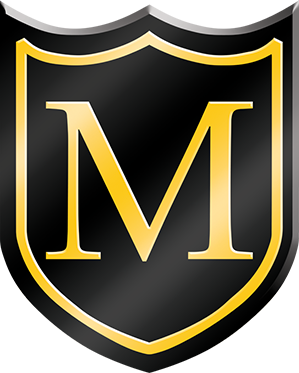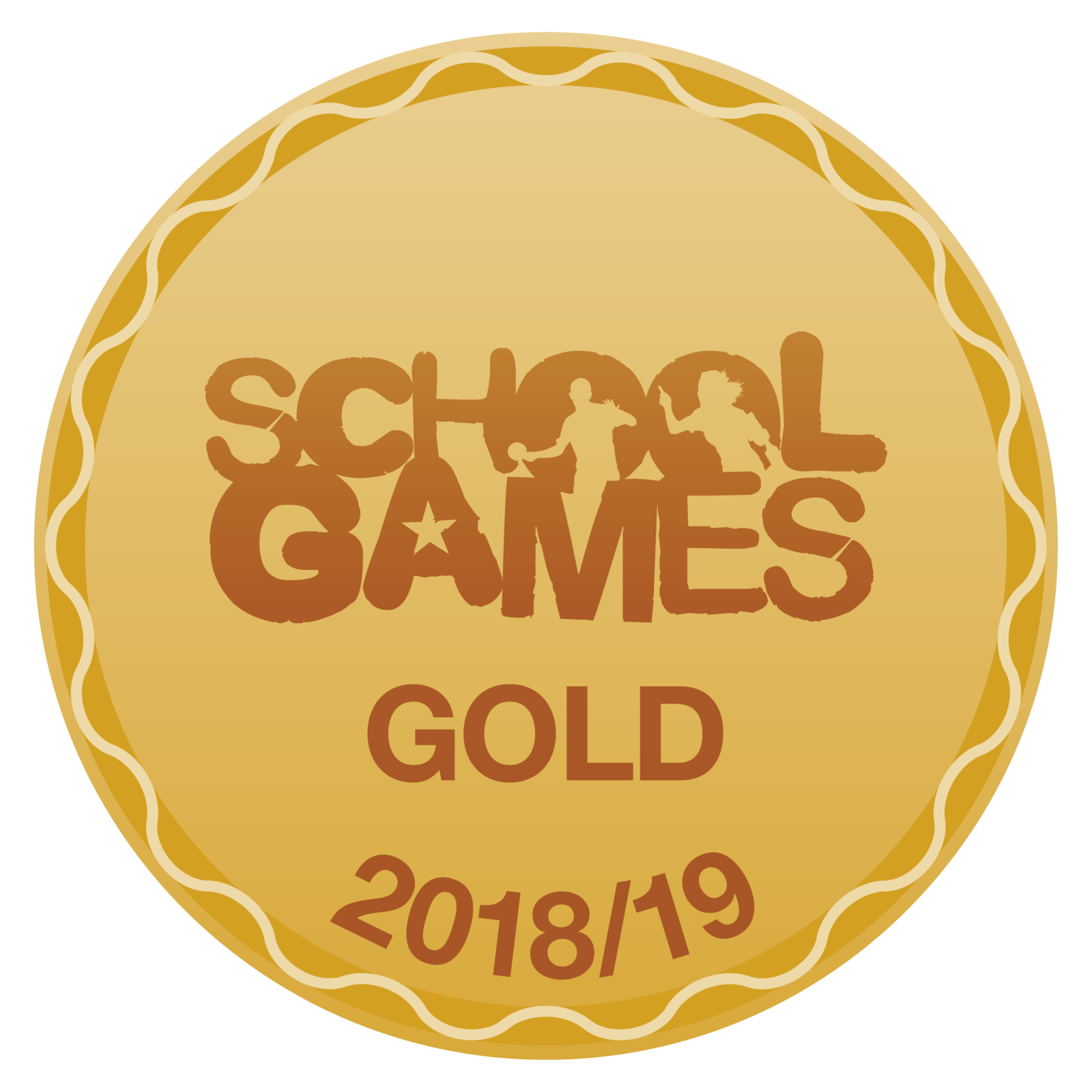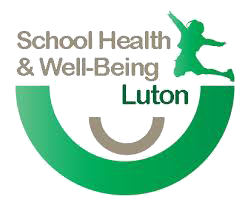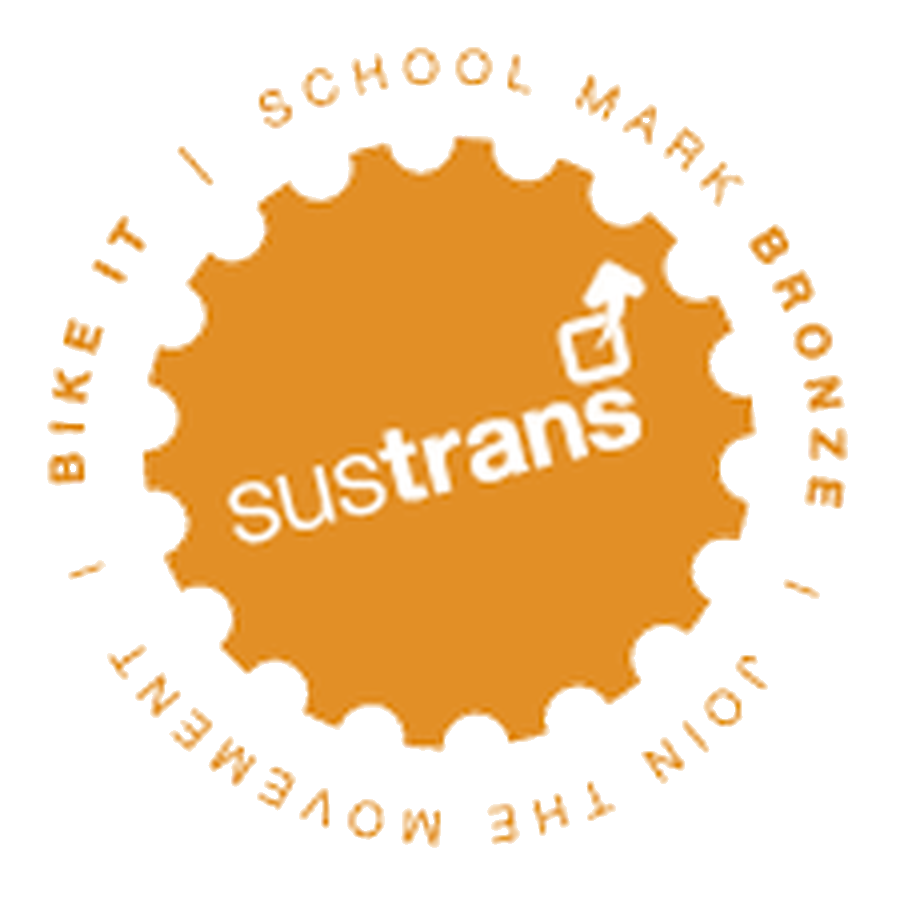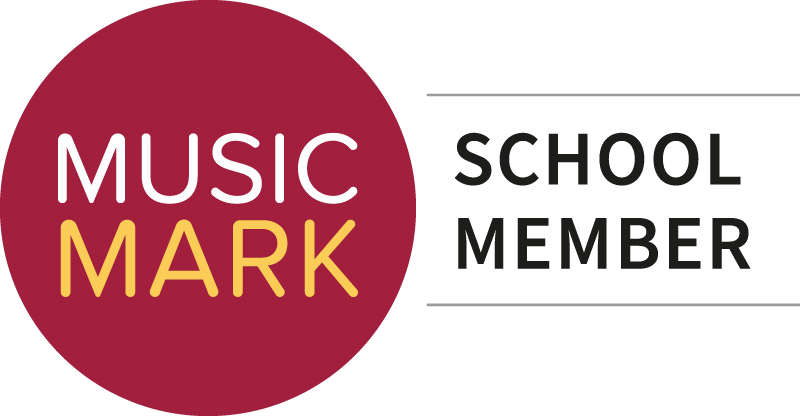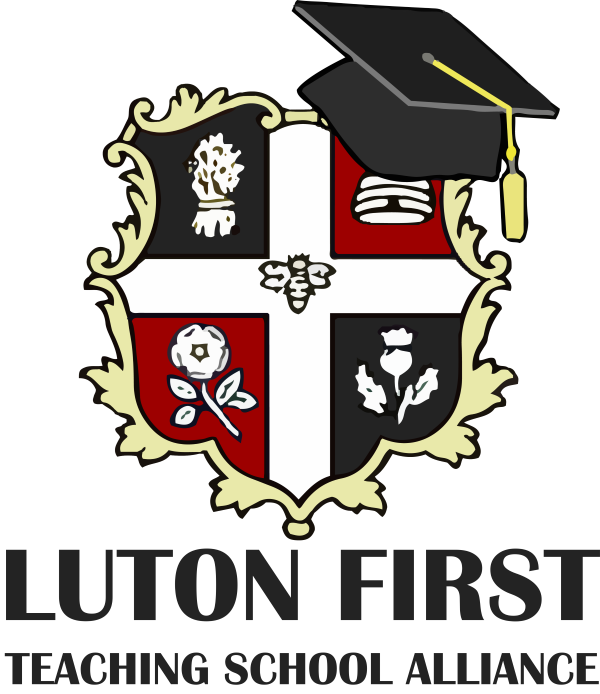PE
Curriculum Intent
Here at The Meads Primary School, we are committed to meeting the requirements of the primary National Curriculum, underpinned by our core values of Resilience, Respect, Responsibility, Kindness and Joy. We recognise the importance that PE and sport plays in the social, physical and cognitive development of children. We believe that the key to pupils’ success is their ability to become physically confident in a way which supports their health and fitness. We will achieve this by providing a broad and balanced curriculum, which provides the foundation of a healthy lifestyle, builds character and contributes to the development of the whole child.
Our curriculum is intended to:
- Promote physical fitness and a healthy lifestyle.
- Develop an understanding of how exercise and diet combine to provide a healthy lifestyle and how this can combat obesity.
- Develop pupil interest and understanding of different sports and games and the skills required to participate in them.
- Develop an awareness of current and historical sporting events.
- Develop children’s awareness of current global challenges and to take responsibility for looking after the world we live in.
Curriculum Coverage
Curriculum Overview
Click here to see the curriculum overview.
EYFS
Autumn Term 1
Fundamental Movement Skills (Balance, Flexibility & Body management)
- Explore balance and managing own body including manipulating small objects.
- Able to stretch, reach, extend in a variety of ways and positions.
- Able to control body and perform specific movements on command.
Vocabulary: climb, step, feet, alternate, one foot, balance, stand, stop, reach, stretch, hold, carry, touch, crawl, jump, roll.
Autumn Term 2
Fundamental Movement Skills (Speed, Agility & Travel)
- Travel with some control and coordination.
- Change direction at speed through both choice and instructions.
- Perform actions demonstrating changes in speed.
- Stop, start, pause, prepare for and anticipate movement in a variety of situations.
Vocabulary: step, feet, alternate, one foot, balance, stand, stop, reach, stretch, hold, carry, touch, crawl, jump, roll, hands, feet, weight, roll, slide, slither, apparatus, low, pause, prepare, anticipate, freeze, high, low, switch, agility, music, beat.
Spring Term 1
Aesthetic (dance based)
- Recognise that actions can be reproduced in time to music; beat patterns and different speeds.
- Perform a wide variety of dance actions both similar and contrasting.
- Copy, repeat, and perform simple movement patterns.
Vocabulary: dance, twist, turn, rhythm, step, music, beat, stretch, feet, curl, high, low, fast, slow.
Spring Term 2
Future Games (Gymnastics)
- Experiment with different ways of moving
- Negotiate space successfully, adjusting speed and changing directions
- Travel with confidence and skill through balancing
- Jump off an object and land appropriately
- Travel with confidence and skill over, under, around and through balancing and climbing equipment
Vocabulary: shape, body tension, pike, dish, saucer, star, direction, travel, balance, speed, crouch, jump, roll.
Summer Term 1
Fundamental Movement Skills (Manipulating objects & Coordination)
- Send and receive a variety of objects with different body parts.
- Work with others to control objects in space.
- Coordinate body parts such as hand-eye, foot-eye over a variety of activities and in different ways.
Vocabulary: agility, alternate, anticipate, apparatus, balance, beat, carry, crawl, feet, freeze, grip, hands, high, hold, hop, jump, low, music, one foot, pause, prepare, reach, roll, slide, slither, stand, step, stop, stretch, switch, touch, weight.
Summer Term 2
Fundamental Movement Skills (Gymnastics)
- Travel safely in different ways
- Travel at different speeds and levels
- Make and hold different shapes
- Link two actions to make a sequence
- Create a sequence of movements that link well
Vocabulary: curl, relax, shape, roll, travel, stretch, sequence, direction, speed, control, balance, climb, jump, still, movement, land, action, tense, body, idea.
Year 1
Autumn Term 1
Fundamental Movement Skills (Agility, Balance & Co-ordination)
- To dribble the ball with hands and feet and pass to a partner
- To show good control with a hoop when playing games
- To balance on different body parts
- To show good technique with an underarm throw
- To control a ball with their feet and a bat
- To travel in different ways
Vocabulary: space, dribble, striking the ball, gears, roll, track, collect, jump forwards, backwards, sideways, skip, balance, small body parts, large body parts, stillness, good body tension, throw, underarm, follow through, travel, inside, outside, sole of foot, dribble, kick, pass, shortest route, hopscotch, relay,
Games skills (ball skills)
- To recognise rules and apply them in competitive and cooperative games.
- Use and apply simple strategies for invasion games.
- Play with a partner using throwing, catching and bouncing skills to score points.
- Use forwards and sideways movement to get in positions to shoot
- Preparing for, and explaining reasons why we enjoy, exercise.
Vocabulary: attack, catch, compete, cooperate, defend, fluency, heart rate, outwit, over-arm, physical activity, pitch, play against, receive, rolling, send, throw, under-arm.
Autumn Term 2
Fundamental Movement Skills (sending & receiving skills)
- Able to send an object with increased confidence using hand or bat.
- Move towards a moving ball to return.
- Sending and returning a variety of balls.
Vocabulary: hit, collect, stop, net, throw, roll, strike, catch, bowl, feed, pick up, batter, hitter, forehand, backhand, court.
Aesthetic (gym based)
- Identify and use simple gymnastics actions and shapes.
- Apply basic strength to a range of gymnastics actions.
- Begin to carry basic apparatus such as mats and benches.
- To recognise like actions and link.
Vocabulary: balance, body tension, carry, control, extension, fast, hang, high, jump, like, link, low, movement, muscles, music, pattern, relaxation, roll, sequence, shape, slow, speed, strength, timing, travel.
Spring Term 1
Aesthetic (dance based)
- Able to build simple movement patterns from given actions
- Compose and link actions to make simple movement phrases
- Respond appropriately to supporting concepts such as canon and levels
Vocabulary: dance, twist, turn, rhythm, step, music, beat, stretch, feet, curl, high, low, fast, slow, compose, choose, select, emotions, canon, rhyme, theme, character, round, respond.
Games skills (principles of target games)
- Develop sending and receiving skills to benefit fielding as a team.
- Distinguish between the roles of batters and fielders.
- Introduce the concept of simple tactics.
Vocabulary: batter, bowl, catch, collect, feed, field, hit, hitter, pick up, retrieve, roll, stop, strike, throw.
Spring Term 2
Aesthetic (gym based)
- To explore curled and stretched shapes
- To link a travel and a shape to make a short sequence
- To explore gymnastic shapes on different body parts
- To link two shapes with a roll
- To explore different ways of travelling and rolling
- To create a short sequence linking a travel and a roll
- To explore balancing on different body parts
Vocabulary: travel, space, high, low, straight, curved, zig zag, shape, small, tall, wide, curled, stretched, body tension, pencil, star, pike, straddle, tuck, squat, dish, arch, stretched, pointed, strides, link, front support, back support, teddy bear roll, pencil roll, egg roll, starting position, finishing position, positions, sequence.
Games skills (principles of Net/Wall)
- To practice basic movements including running, jumping, throwing and catching
- To begin to engage in competitive activities
- To experience opportunities to improve agility, balance and co-ordination
Vocabulary: attack, catch, compete, defend, over-arm, play against, receive, rolling, send, throw, under-arm.
Summer Term 1
Fundamental Movement Skills (striking & fielding)
- Able to hit objects with hand or bat.
- Track and retrieve a rolling ball.
- Throw and catch a variety of balls and objects.
Vocabulary: batter, bowl, catch, collect, feed, field, hit, hitter, pick up, retrieve, roll, stop, strike, throw.
Aesthetic (dance based)
- Respond to a range of stimuli and types of music
- Explore space, direction, levels and speeds
- Experiment creating actions and performing movements with different body parts
Vocabulary: beat, curl, dance, fast, feet, high, low, music, rhythm, step, stretch, swing, turn, twist.
Summer Term 2
Fundamental Movement Skills (athletics based)
- Pupils will begin to link running and jumping.
- To learn and refine a range of running which includes varying pathways and speeds.
- Develop throwing techniques to send objects over long distances.
Vocabulary: backwards, distance, far, fast, forwards, furthest, high, hop, link, medium, power, run, sideways, skip, skipping, slow, step, straight, throw.
Multi Skills (Balance, Coordination & Agility)
- To know how to balance on different body parts.
- To know how to use the arms to counterbalance movement.
- To know how to coordinate different parts of the body so they work together.
- To know how to roll/throw a ball to a partner accurately.
- To know how to turn quickly and change direction.
- To know how to travel in different ways
- To know how to throw accurately
- To know how to travel in a variety of ways using different pieces of equipment.
- To know how to work together as a team.
Vocabulary: balance, coordination, agility, travel, counterbalance, roll, throw, relay, station, direction, change, station, teamwork.
Year 2
Autumn Term 1
Fundamental Movement Skills (Agility, Balance & Coordination)
- To move with an awareness of space
- To move in different directions
- To change pace when running
- To run in a straight line and change direction at a marker
- To send and catch a ball to yourself
- To bounce a ball whilst travelling
- To perform an over arm throw
- To use a variety of throws in a game
Vocabulary: space, travel, running, raising heels, jump, bounce, jogging, swing arms, hopping, star jumps, large / small strides, skipping, galloping, speed, forwards, backwards, sideways, side skip, light feet, curve, underarm, send, catch, roll, dodge, chest pass, bounce, jog, over arm, throw
Games Skills (principles of target games)
- Develop sending skills with a variety of balls
- Track, intercept and stop a variety of objects such as balls and beanbags
- Select and apply skills to beat opposition
Vocabulary: backhand, bowl, catch, collect, court, feed, forehand, hit, hitter, net, pick up, roll, serve, stop, strike, throw.
Autumn Term 2
Fundamental Movement Skills (striking & fielding)
- Work on a variety of ways to score runs in the different hit, catch, run games
- Work in teams to field
- Begin to play the role of wicketkeeper or backstop
Vocabulary: hit, catch, runs, wicket, bats, bowl, feed, throw, catch, underarm, over arm, field, hitter, bowler, umpire, posts, stumps
Aesthetic (gym based)
- Describe and explain how performers can transition and link gymnastic elements
- Perform with control and consistency basic actions at different speeds and on different levels
- Challenge themselves to develop strength and flexibility
- Create and perform a simple sequence that is judged using simple gymnastic scoring
Vocabulary: jump, roll, balance, travel, control, speed, link, slow, fast, high, low, shape, sequence, pattern, movement, music, timing, hang, like, carry, relaxation, extension, body tension, muscles, strength, rock, roll, turn, spin
Spring Term 1
Aesthetic (dance based)
- Perform using more sophisticated formations as well as an individual
- Explore relationships through different dance formations
- Explain the importance of emotion and feeling in dance
- Use the stimuli to copy, repeat and create dance actions and motifs
Vocabulary: unison, phrase, links, dance, dynamic, independent, pair, clock face, time, motif, freestyle, formation, on stage, off stage, mirror, match, copy, repeat, mood, emotion
Games Skills (principles of invasion games)
- Can send a ball using feet and can receive a ball using feet.
- Refine ways to control bodies and a range of equipment.
- Recall and link combinations of skills, e.g. dribbling and passing.
Vocabulary: aim, attack, compete, controlling, cooperate, defend, direction, fluency, following, heart rate, kick, outwit, physical activity, pitch, play against, rebound, receive, scoring, send, speed.
Spring Term 2
Aesthetic (gym based)
- To remember, repeat and link simple gymnastic actions with control
- To show a clear start position.
- To take off and land with control when jumping
- To explore and choose different ways they can perform actions, e.g. making different shapes,
- To use contrasting actions to vary a sequence
- To vary simple compositional ideas in the sequence they create and perform.
- To improve their work using information they have gained by watching, listening and investigating.
Vocabulary: jump, land, rock, roll, grip, hang, push, pull, bounce, hop, skip, step, spring, crawl, slide, under, through; tension, extension, relaxation.
Games Skills (principles of Net/Wall)
- Be able to track the path of a ball over a net and move towards it
- Begin to hit and return a ball using a variety of hand and racquet with some consistency
- Play modified net/wall games throwing, catching and sending over a net
Vocabulary: hit, collect, stop, net, throw, roll, strike, catch, bowl, feed, pick up, hitter, forehand, backhand, court, serve, bounce, drop, badminton, tennis, volleyball, squash, shuttlecock, racquet.
Summer Term 1
Fundamental Movement Skills (ball skills)
- To move in different directions while dribbling a ball
- To strike a ball from a static position
- To track a ball
- To perform a chest pass
- To move with an awareness of space
Vocabulary: target, throw, catch, release, dribble, balance, catch, strike, send, rebound, chase, collect, chest pass, defender, dodge, change direction, receive, defend, attack, throw, score, attack, defend, move into space, intercept.
Aesthetic (dance based)
- Describe and explain how performers can transition and link shapes and balances
- Perform with control and consistency basic actions at different speeds and on different levels
- Challenge themselves to move imaginatively responding to music
- Work as part of a group to create and perform short movement sequences to music
Vocabulary: dance, twist, turn, rhythm, step, music, beat, stretch, feet, curl, high, low, fast, slow, direction, huddle, group, mood, feeling, musicality, respond, galloping, flying, jumping.
Summer Term 2
Fundamental Movement Skills (athletics based)
- Develop power, agility, coordination and balance over a variety of activities
- Can throw and handle a variety of objects including quoits, beanbags, balls, hoops
- Can negotiate obstacles showing increased control of body and limbs
Vocabulary: run, hop, skip, step, forwards, backwards, sideways, throw, high, far, straight, furthest, distance, fast, slow, medium, link, skipping, power.
Games Skills (principles of striking and fielding)
- To developing hitting skills with a variety of bats
- Practice feeding/bowling skills
- Hit and run to score points in games
Vocabulary: hit, catch, runs, wicket, bats, bowl, feed, throw, catch, underarm, overarm, field, hitter, bowler, umpire, posts, stumps.
Year 3
Autumn Term 1
Invasion Games- Tag Rugby
- keep possession of a rugby ball when still and moving
- catch a rugby ball
- demonstrate a pass showing some accuracy
- Keep possession of a rugby ball when still and moving
- avoid a tagger using change of direction and speed
- change direction whilst moving
- demonstrate a pass showing some accuracy within a game
Vocabulary: ball handling, ball possession, throw, catch, defend, carry, attack, tag, space, change direction, space, try.
Dance
- Practise different sections of a dance aiming to put together a performance
- Perform using facial expressions
- Perform with a prop
- Select and apply actions to a dance phrase
- Discuss your own and others work with some awareness of dance choreography
Vocabulary: dance, twist, turn, rhythm, step, music, beat, stretch, levels, fast, slow, direction, huddle, group, mood, feeling, musicality, emotions, facial expression, improvisation, rehearse, director
Autumn Term 2
OAA- Team Building
- To work with others to solve problems
- To describe their work and use different strategies to solve problems
- To lead others and be led
- To differentiate between when a task is competitive and when it is collaborative
- Communicate to solve problems
- To complete tasks using symbols and maps
- Work independently and as part of a team
- Identify what worked well and what they need to improve when working as a group
- Take part in trust-based activities
Vocabulary: maps, diagrams, scale, symbols, orienteering, controls, challenges, problem-solving, lead, follow, plan, trust
Gymnastics
- Modify actions independently using different pathways, directions and shapes
- Consolidate and improve quality of movements and gymnastics actions
- Relate strength and flexibility to the actions and movements they are performing
- To use basic compositional ideas to improve sequence work—unison
- Demonstrate extension in shapes
- Produce flow in sequence
- Explore a greater range of contrasting actions
- Consolidate and improve quality of basic rolls and jumps
- Work in a group of 3 or 4 to produce a contrasting sequence
Vocabulary: fluency, contrasting, unison, low, combinations, full turn, half- turn, sustained, explosive, power, control, group, similar, different.
Spring Term 1
Net/Wall- Netball
- To be able to perform basic netball skills such as passing and catching using recognised throws
- To use space efficiently to build attacking play
- To implement the basic rules of netball
- Pass and receive the ball in a variety of ways
- Work collaboratively to keep possession by passing accurately
- To keep possession of the ball to build an attack
- Create opportunities to shoot
- Throw over longer distances using shoulder pass
- Recognise which throw is needed over shorter & longer distances
- Use a range of accurate passes to build an attack
- Use tactics and work together to score goals
- Suggesting ways to improve own & others game
Vocabulary: space, pass, accurately, mark, dodge, attack, defend, footwork, possession, change of direction, tactics, teamwork, shooting, zones, intercept.
Dance
- Building stylistic qualities of Disco Dance through repetition and applying movement to own bodies
- Building basic creative choreography skills in travelling, dynamics and partner work in the specific style of Disco Dance.
- Explore different ways of travelling and link it to the style of dance
- Develop movements using improvisation
- Demonstrate awareness of unison and cannon
- Apply feedback from others to improve performance
Vocabulary: unison, cannon, step ball change, dynamics, partner work, floor patterns, shape, angular, energetic, strong, mirroring, linear.
Spring Term 2
Invasion- Football
- Able to show basic control skills including sending and receiving the ball.
- To send the ball with some accuracy to maintain possession and build attacking play.
- To implement the basic rules of football.
- Use short passes to keep possession.
- Move into space to receive the ball.
- Send the ball and move into a new space.
- Receive the ball and dribble into space.
- Use control of the ball to keep possession in a game.
- Use short passes and dribbling to build an attack.
Vocabulary: control, use space, defend, attack, dribble, pass, tactics, compete, collaborate, teamwork, score, shoot, intercept, foot, inside of the foot, touch, possession.
Swimming
- Perform a basic self-rescue in water based situations
- Perform safe self-rescue in different water based situations
- Join in water activities
- Travel 0-5m with aids
- Swim up to 5m
- Swim between 5-10m
- Swim between 10-15m
- Swim between 15-25m
- Swim 25m (or more) competently, confidently and proficiently
- Use a range of strokes effectively e.g. front crawl, backstroke and breaststroke
Vocabulary: stroke, front crawl, backstroke, breaststroke, rescue, confidence, competence.
Summer Term 1
Athletics
- Control movements and body actions in response to specific instructions
- Demonstrate agility and speed
- Jump for height and distance with control and balance
- Throw with speed and power and apply appropriate force
- Run at different speeds
- Start-stop and change pace with control
- Demonstrate agility in running
- Identify ways to improve own, and others work
Vocabulary: run, jump, throw, agility, power, speed, track, force, distance, curve, accelerate, hurdles, foam javelins, vortex howler, bounce
Swimming
- Perform a basic self-rescue in water based situations
- Perform safe self-rescue in different water based situations
- Join in water activities
- Travel 0-5m with aids
- Swim up to 5m
- Swim between 5-10m
- Swim between 10-15m
- Swim between 15-25m
- Swim 25m (or more) competently, confidently and proficiently
- Use a range of strokes effectively e.g. front crawl, backstroke and breaststroke
Vocabulary: stroke, front crawl, backstroke, breaststroke, rescue, confidence, competence.
Summer Term 2
Striking/Fielding- Rounders
- To be able to play simple rounders games
- To apply some rules to games
- To develop and use simple rounders skills
- Hit a stationary ball into space
- Retrieve and throw the ball as a fielder
- To bowl with some consistency in a game situation
- To work collaboratively to send the ball back to the bowler
- To apply simple tactics to choose where to hit the ball
- Stop a moving ball with consistency
- Collect and return a moving ball
- Throw over longer distances using overarm throw
- Throw to appropriate bases based on the scenario of each conditioned game
- Use accurate throws to return a ball to the bases/bowler
- Strike a bowled ball to score runs for your team
Vocabulary: batting, fielding, bowling, bat, bases, ball, run, batter, bowler, fielder, innings, no ball, batting box, backstop, rounders, half rounders
Swimming
- Perform a basic self-rescue in water based situations
- Perform safe self-rescue in different water based situations
- Join in water activities
- Travel 0-5m with aids
- Swim up to 5m
- Swim between 5-10m
- Swim between 10-15m
- Swim between 15-25m
- Swim 25m (or more) competently, confidently and proficiently
- Use a range of strokes effectively e.g. front crawl, backstroke and breaststroke
Vocabulary: stroke, front crawl, backstroke, breaststroke, rescue, confidence, competence.
Year 4
Autumn Term 1
Invasion- Football
- Introduce some defensive skills
- Dribbling in different directions using different parts of their feet
- Passing for distance
- Evaluating skills to aid improvement
- Move to stay with an attacking player.
- Demonstrate two types of marking and attacking the player (front marking and goal side marking).
- Apply defensive tackling to game scenarios.
- Use dribbling to progress forward.
- Combine dribbling and passing to benefit the team.
- Attempt distance passes in games to work towards a goal.
- Vocabulary: control, use space, defend, attack, dribble, pass, tactics, compete, collaborate, teamwork, score, shoot, intercept, foot, inside of the foot, touch, possession.
Swimming
- Perform a basic self-rescue in water based situations
- Perform safe self-rescue in different water based situations
- Join in water activities
- Travel 0-5m with aids
- Swim up to 5m
- Swim between 5-10m
- Swim between 10-15m
- Swim between 15-25m
- Swim 25m (or more) competently, confidently and proficiently
- Use a range of strokes effectively e.g. front crawl, backstroke and breaststroke
Vocabulary: stroke, front crawl, backstroke, breaststroke, rescue, confidence, competence.
Autumn Term 2
Net/Wall- Basketball
- To dribble with a basketball.
- To use a range of techniques to pass a basketball successfully
- To know how to pivot.
- To move effectively around the court
- To use strategies to keep possession of the ball. To know how to mark a player effectively.
- To get free from a defender
- To apply our basketball skills when playing as part of a team in a game.
Vocabulary: control, accuracy, possession, pass, dribble, shoot, communicate, space, tactic, attack, defend.
Swimming
- Perform a basic self-rescue in water based situations
- Perform safe self-rescue in different water based situations
- Join in water activities
- Travel 0-5m with aids
- Swim up to 5m
- Swim between 5-10m
- Swim between 10-15m
- Swim between 15-25m
- Swim 25m (or more) competently, confidently and proficiently
- Use a range of strokes effectively e.g. front crawl, backstroke and breaststroke
Vocabulary: stroke, front crawl, backstroke, breaststroke, rescue, confidence, competence.
Spring Term 1
OAA- Problem Solving
- Work well in a team or group within defined and understood roles
- Plan and refine strategies to solve problems
- Identify the relevance of and use maps, compass and symbols
- Identify what they do well and suggest what they could do to improve
- Operate as part of a team to solve a problem
- Listen and be directed by others
- Perform under time pressures
- Refine answers from clues
Vocabulary: maps, diagrams, scale, symbols, orienteering, compass, challenges, problem-solving, lead, follow, plan, trust, solve, cardinal points.
Swimming
- Perform a basic self-rescue in water based situations
- Perform safe self-rescue in different water based situations
- Join in water activities
- Travel 0-5m with aids
- Swim up to 5m
- Swim between 5-10m
- Swim between 10-15m
- Swim between 15-25m
- Swim 25m (or more) competently, confidently and proficiently
- Use a range of strokes effectively e.g. front crawl, backstroke and breaststroke
Vocabulary: stroke, front crawl, backstroke, breaststroke, rescue, confidence, competence.
Spring Term 2
Striking/Fielding- Cricket
- Use correct techniques for catching a ball when fielding in cricket.
- Use an overarm throw to hit a target with accuracy.
- Use the long barrier technique to stop a rolling ball
- Develop defensive hitting techniques for batting in cricket.
- Develop attacking hitting techniques for batting in cricket
- Develop the correct technique for bowling overarm in cricket from a standing position.
- Know and apply the rules of Kwik Cricket during a game.
- Use a range of fielding, batting and bowling skills in a Kwik Cricket match.
Vocabulary: batsman, boundary, bowl, catch, crease, cut shot, fielding, forward defensive, grip, innings, outfield, over, overarm throw, pull shot, stance, stumps, wicket keeper, trajectory.
Gymnastics
- To become increasingly competent and confident to perform skills more consistently
- Able to perform in time with a partner and group
- Use compositional ideas in sequences such as changes in height, speed and direction
- Compose and perform a sequence of 6 elements
- Use compositional ideas including changes in speed & direction
- Work with a partner to create a sequence in unison
- Compose a sequence of actions including some element of weight on hands
- Demonstrate control & body tension when taking weight on hands
- Compare and contrast group performances
Vocabulary: fluency, contrasting, unison, low, combinations, full turn, half- turn, sustained, explosive, power, control, group, similar, different, direction, speed, partner, actions.
Summer Term 1
Athletics
- Compare the effectiveness of different styles of runs, jumps and throws using a variety of equipment, ways of measuring and timing
- Challenge yourself to jump in a variety of ways for distance and height
- Show different ways of running
- Compare different throws with different equipment
- Practice and perform running at speed
- Use running to increase the distance of jumps
- Demonstrate control upon take off
- Introduce sling technique for discus throws
- Perform running on a curve
- Perform a baton exchange
- Analyse as a team how to improve the baton exchange
- Challenge self to improve scores using appropriate techniques
- Evaluate to aim to improve performance second time
Vocabulary: run, jump, throw, agility, power, speed, track, force, distance, curve, accelerate, hurdles, foam javelins, vortex howler, bounce.
Dance
- Practise and perform a variety of different formations in dance
- Develop a dance to perform as a group with a set starting position
- Develop dance ‘freeze frames’ based on a visual stimulus
- Work in small groups to create freeze-frame positions to include transitions
- Demonstrate how to link positions in a variety of ways
- Practice and perform a slide and roll
- To perform in cannon routines and cannon lines
- Work collaboratively in small groups to refine movements
- Practice and perform a routine which includes an ‘entering’ start position
Vocabulary: dance, turn, rhythm, stretch, levels, fast, slow, direction, huddle, mood, feeling, emotions, facial expression, improvisation, rehearse, director, choreographer, slide, formation, freeze frames.
Summer Term 2
Net/Wall- Tennis
- Explore different shots (forehand, backhand)
- Work to return the serve
- Positions in gameplay
- Be in correct position to move and receive/return balls
- Identify the differences between forehand and backhand shots
- Move towards and return a moving ball
- Return balls to different places on the court
- Use tennis skills to play in doubles games
- Play competitively and cooperatively with others and against others
Vocabulary: hit, return, court, forehand, backhand, bounce, points, score, net, tactics, underarm, overarm, position, ready
Gymnastics
- Develop an increased range of body actions and shapes to include in a sequence
- Define muscles groups needed to support the core of their body
- Refine taking weight on small and large body parts, for example, hand and shoulder
- Link balance and travel with given actions
- Show control and tension
- Experiment with one footed balances
- Work with a partner to practise, refine transition between movements with control
- Practise front support, press up, to side support and pike using increased control of core from the last session
- Develop balances for taking weight on shoulders
- Progress shoulder balance to shoulder stand
- Perform demonstrating smooth transitions
Vocabulary: fluency, contrasting, unison, low, combinations, full turn, half- turn, sustained, explosive, power, control, group, similar, different, bounce, box splits, tension, travelling steps.
Year 5
Autumn Term 1
Invasion- Hockey
- To be able to be able to combine basic hockey skills such as dribbling and push pass
- To be able to select and apply skills in a game situation confidently
- To begin to play effectively in different positions on the pitch including in defence
- To increase power and strength of passes, moving the ball over longer distances
- Use the block tackle in insolation
- Dribble and shoot with accuracy
- Mark and intercept the ball
- Moving and receiving the ball from longer distances
- Use a range of simple skills to stop, control and send
- To work cooperatively as a team to defend & attack
- Use simple skills to keep possession
Vocabulary: control, use space, defend, attack, dribble, pass, push, slap, tactics, compete, collaborate, teamwork, score, shoot, positions, power, distance, perform, consistent, fair play.
Gymnastics
- To perform symmetrical and asymmetrical jumps and symmetrical travelling movements including a shoulder roll
- To work with a partner to link shapes and travel with a change of direction
- To balance symmetrically including headstands
- To develop core body and leg strength by performing strength exercises
- To work in small groups to compose and refine an 8 move sequence.
- To watch, describe and suggest possible improvements to others work.
- To choose appropriate exercises for warming up and understand how to prepare themselves and others for exercise.
Vocabulary: quality of movement, extension, body tension, control, direction, sequence, take off, landing, strengthen, balance, symmetrical, asymmetrical.
Autumn Term 2
Invasion- Football
- To play effectively in a variety of positions and formations on the pitch
- Relate a greater number of attacking and defensive tactics to gameplay
- Become more skilful when performing movements at speed
- Receive the ball and turn into space or to shoot
- Recognise space and opportunities for running with the ball
- Travel quickly and effectively with the ball
- Combine running with the ball and sending into space
- Selecting where to pass the ball on completion of a run
- Choose when to change position in a game
- Act as a team to win back possession
- Decide when goal side marking is needed
Vocabulary: control, use space, defend, attack, dribble, pass, tactics, compete, collaborate, teamwork, score, shoot, positions, power, distance, perform, consistent, fair play, possession, goal side.
Dance
- Perform different styles of dance fluently and clearly
- Refine & improve dances adapting them to include the use of space rhythm & expression
- Worked collaboratively in groups to compose simple dances
- Recognise and comment on dances suggesting ideas for improvement
- To be able to perform non-locomotor and locomotor movements together
- To link movements into a short dance phrase
- Create pathways and patterns as a group
- Use performance skills in their dance
Vocabulary: dance, stretch, levels, mood, feeling, emotions, facial expression, improvisation, rehearse, director, choreographer, slide, formation, locomotion, Bhangra, wall patterns, steps, dance style.
Spring Term 1
Multi Skills Fitness- Circuits
- Take part in initial 4 health related fitness assessments.
- Understand the functions of the cardiovascular system and how aerobic fitness affects our bodies.
- Perform a cardio circuit developing their own aerobic fitness.
- Understand the meaning of flexibility and how flexibility affects our bodies.
- Perform a flexibility circuit developing their own flexibility.
- Understand the meaning of strength and how strength affects our bodies.
- Perform a strength circuit developing their own strength.
- Develop understanding of aerobic fitness and how exercise affects our bodies.
- Perform an aerobic fitness circuit developing their own aerobic fitness.
- Compare assessment scores with their initial fitness assessment scores.
Vocabulary: health, fitness, cardiovascular system, aerobic, anaerobic, flexibility, circuit, strength.
Net/Wall- Badminton
- Serve a shuttlecock with a good level of accuracy.
- Develop forehand skills using the forehand lift technique
- Improve footwork to develop the use of chasse steps
- Develop grip changing skills
- Understand how to hold a racket to hit a shuttlecock when using a backhand serve
- Demonstrate a lunge with good range by pointing front foot towards the impact point of the shuttle
- Find ways of getting into position to play backhand and forehand shots
- Learn how to outwit opponent by understanding which areas of the court make playing more difficult
- Participate in a variety of forecourt net games.
Vocabulary: serving, footwork, racket, handshake grip, position, forehand, backhand, baseline, underarm rotation, backhand swing, flick technique, chasse steps, umpire, opponent, lunge position.
Spring Term 2
Striking/Fielding- Cricket
- Link together a range of skills and use in combination
- Collaborate as a team to choose, use and adapt rules in games
- Recognise how some aspects of fitness apply to cricket e.g. power, flexibility and cardiovascular endurance
- Start sprints with power to run between wickets
- Select a shot to direct the ball
- Throwing a ball for accuracy
- Using the short throw to run players out
- Positioning to catch the ball for run out in game scenario
- Increase accuracy of overarm bowling considering flexibility
- Attempt a range of shots in a game situation
- Field with some awareness of batter’s strengths
Vocabulary: stance, bowling, bat, wicket, stumps, crease, boundary, batsman, bowler, wicket keeper, bail, field, innings, strike, cross, four, six, single, over, balls, shot, forward, defensive, offensive.
Gymnastics
- Create longer and more complex sequences and adapt performances
- Take the lead in a group when preparing a sequence
- Develop symmetry individually, as a pair and in a small group
- Compare performances and judge strengths and areas for improvement
- Select a component for improvement. For example—timing or flow
- Complete a four-element sequence containing actions at different heights and speeds
- Take weight on hands to move forward
- Explore symmetrical and asymmetrical balances and travels
- Create a short sequence that contains counter balances
- Move smoothly from one balance to another with partner
- Show clear individual movements
Vocabulary: symmetry, sequences, combinations, direction, speed, partner, asymmetrical, elements, control, balance, strength, flexibility, asymmetrical.
Summer Term 1
Athletics
- Sustain pace over short and longer distances such as running 100m and running for 2 minutes
- Able to run as part of a relay team working at their maximum speed
- Perform a range of jumps and throws demonstrating increasing power and accuracy
- Recognise the importance of setting a pace for longer runs
- Identify & recognise most effective jumping style for distance
- Explore combining jumping sequences, e.g. hop, step, jump
- Use push throw accurately and aim for targets
- Perform baton exchange as part of a relay team
- Anticipate when to start moving on the exchange
Vocabulary: run, jump, throw, agility, power, speed, track, force, distance, curve, accelerate, hurdles, foam javelins, vortex howler, bounce, relay, baton, safety, rules, targets, record, set, take over, pass.
Dance
- Using professional examples to inspire ideas for explosive action.
- Owning and exploring new movement possibilities.
- Work with devices to add interest to action and explore different types of jumps.
- Perform clear shapes and build patterns as part of a team using formations
- Create varied dance movements in a group using level and formations
- Perform an elevation sequence with control
- Copy and execute movement to communicate narrative
- Develop movement by using formations and floor patterns
- Use facial expression, dynamics and focus to communicate character and narrative
- Work effectively with others to improve movement quality
- Perform clearly and with confidence
Vocabulary: performance quality, dynamics, formations, floor patterns, assemblé, sissone, sauté, jump, fall, travel, turn, gesture, stillness, chainé, retrograde, inversion, instrumentation, fragmentation.
Summer Term 2
Striking/Fielding- Rounders
- To know and apply the rules of rounders during a game.
- To use a range of throwing, catching, fielding and batting strategies
- Hit a bowled ball with force and control the direction of the hit
- Intentionally vary the speed and style of the ball when bowling
- Accurately throw a ball overarm over a long distance in order to reach a designated target
- Move into the correct position or space to catch a ball that is thrown or hit into the field;
- To be able to ‘read’ the game and apply tactics to outwit opponents.
- Develop their own tactics and strategies to positively impact gameplay
Vocabulary: batting, fielding, bowling, bat, bases, ball, run, batter, bowler, fielder, innings, no ball, batting box, backstop, rounders, half rounders, overarm, underarm, control, accuracy, tactics.
OAA
- Explore ways of communicating in a range of challenging activities
- Navigate and solve problems from memory
- Develop and use trust to complete the task and perform under pressure
- Explore ways of communicating
- Use memory and recall skills to navigate to destinations
- Using memory methods to remember and recall objects
- Suggest real-life situations where memory & recall are important
- Compete against others to complete a challenging task
- Use ingenuity and imagination to complete a task
- Interpret Morse Code and use it to communicate with others
Vocabulary: maps, diagrams, remember, symbols, orienteering, challenges, problem-solving, lead, challenge, plan, trust, solve, team, design, instructions, extend, orient, Morse code, decipher, individual.
Year 6
Autumn Term 1
Invasion- Football
- Choose and implement a range of strategies to attack and defend
- To perform a wider range of more complex skills
- Recognise and describe good individual and team performances
- Suggest, plan and lead simple drills for given skills
- Pass to set up another player’s shot on goal
- Run onto the ball to attempt to shoot and score
- Apply speed and accuracy to a penalty shot
- Apply attacking in pairs skill to a game
- As a defensive pair work to close down one attacker
- Use foot placement to send and receive the ball at speed
Vocabulary: control, use space, defend, attack, dribble, pass, tactics, compete, collaborate, teamwork, score, shoot, positions, power, distance, perform, consistent, fair play, tackle, covering, supporting.
Dance
- Describe some of the features and steps of popular wartime dances;
- Perform and link a wider range of dance steps from the Charleston, Lambeth Walk and Lindy Hop
- Describe what they have done or changed in order to better their performance during a lesson and unit
- Link a series of dance motifs to create a longer dance sequence which reflects a theme or tells a story
- Work with others to choreograph effective routines while recognising and developing their own strengths and abilities within a group.
Vocabulary: air steps, canon, Charleston, develop, dynamics, structure, style, swing, tango, technique, tempo, theme, unison, fox trot, improvise, interpretive dance, jazz, mood, motif, one step.
Autumn Term 2
Net/Wall- Netball
- Work as a team to improve group tactics and gameplay
- Play within the rules using blocking skills for shots and passes
- Develop defensive skills
- Introduce the double bounce rule
- Recap throwing and catching skills used in netball
- Practise marking the ball for a pass or a shot
- Umpire the 1m rule for a player marking the ball
- Play in a game utilising the marking the ball skill
- Attempt rebounds as both attacker & defender in practices and competitive games
- Make choices about which pass to use
- Play in competitive games as part of a team
Vocabulary: control, use space, defend, attack, chest pass, tactics, compete, collaborate, teamwork, score, shoot, footwork, foul, free pass, pivot, blocking.
Gym
- To move fluently and with control into and out of balances
- To evaluate a partner’s movements and give appropriate feedback to help them improve
- To incorporate methods of flight into a fluent and controlled sequence
- To incorporate twisting and turning movements into a sequence
- To transfer skills from floor and small apparatus to large apparatus
- To apply a range of compositional principles – level, direction, speed
- To perform and refine their sequence accurately with clarity, consistency and fluency.
- To perform an effective warm up and understand the purpose of raising the heart rate
Vocabulary: quality of movement, extension, body tension, control, balance, sequence, evaluate, heart rate.
Spring Term 1
OAA
- Use information given by others to complete tasks and work collaboratively
- Take responsibility for a role in a task
- Work as a pair to follow and orient a map
- Select a correct travelling pace, e.g. running, jogging or brisk walking pace
- Work as part of a pair to complete a scavenger hunt
- Balance safely and with control
- Perform a pyramid balance as part of a small group
- Work collaboratively to complete a range of paired and group activities
- Problem solve as part of a team
Vocabulary: maps, diagrams, scale, symbols, orienteering, compass, challenges, problem-solving, lead, follow, plan, trust, solve, team, design, instructions, extend, knot, orient.
Dance
- Watch professional work and describe how the action communicates the theme
- Create a phrase of gestures which communicate the theme
- Manipulate and develop own action using devices (cannon, contrast, variation)
- Perform clear shapes and actions as part of a team to communicate a narrative
- Create varied dance movements in a group to communicate a narrative
- Use formation to communicate relationships and tension
- Use facial expression, dynamics and focus to communicate character and narrative
- Work effectively with others to improve movement quality
- Perform clearly and with confidence
Vocabulary: communicate, theme, actions, gestures, stance, devices, canon, contrast, variation, narrative, tension, relationship, travelling, transverse.
Spring Term 2
Athletics
- Become confident in a range of techniques and recognise their success
- Apply strength and flexibility to a broad range of throwing, running and jumping activities
- Accurately and confidently judge across a variety of activities
- Use power to improve start of a short sprint
- Refine running skills to improve times
- Examine the link between height trajectory of a throw on distance
- Use a variety of techniques including push, pull and sling
- Work in a group to accurately record data for a range of equipment
- Compete against others
Vocabulary: run, jump, throw, agility, power, speed, track, distance, curve, accelerate, hurdles, foam javelins, vortex howler, bounce, relay, baton, safety, rules, targets, record, set, take over, pass, strength, judge, trajectory.
Circuit training
- Become familiar with correct warming up and cooling down exercises
- Understand the importance of warming up and cooling down properly
- Be able to say why physical activity is good for health and well-being
- Learn about exercises that develop speed, strength and stamina
- Understand that moderate exercise feels energetic but not exhausting
- Understand that moderate exercise can be maintained for a longer time by pacing yourself
- Understand there are different exercises to develop skill
- Be able to explain why it is important to choose exercise activities you enjoy
- Monitor how the body changes during exercise
Vocabulary: warm up, cool down, health, wellbeing, mobility exercises, circuit, stations, energy, daily physical activity, breathing, temperature, changes, stamina.
Summer Term 1
Net/Wall- Tennis
- Develop backhand shots and use when necessary in game situations
- Introduce the lob shot in isolated situations
- Perform a lob shot in gameplay
- Continue developing doubles play and tactics to improve
- Defend points against opposition using teamwork skills to return balls over the court
- Play in a game against the opposition in doubles and singles using full tennis scoring systems
- Umpire a game of doubles and singles
- Implement basic positioning as a pair to score points
Vocabulary: hit, return, court, forehand, backhand, bounce, points, score, net, tactics, underarm, overarm, position, ready, volley, overhead, singles, doubles.
Hockey
- Understand the basics of hockey and the dribbling technique used within a game
- Understand the correct technique to hit and stop a ball
- To be able to apply the correct technique for a push pass
- Develop the ability to push pass on the move
- Be able to perform a block tackle in a small sided game
- Understand the basic rules of shooting within a game
Vocabulary: control, use space, defend, attack, dribble, pass, push, slap, tactics, compete, collaborate, teamwork, score, shoot, positions, power, distance, perform, consistent, fair play.
Summer Term 2
Striking/Fielding- Cricket
- Apply with consistency standard cricket rules in a variety of different styles of games
- Attempt a small range of recognised shots in isolation and in competitive scenarios
- Use a range of tactics for attacking and defending in role of bowler, batter and fielder
- Tracking and catching a high ball
- Using the short ball to tempt players to hit high
- Track and retrieve the ball over distance
- Identify when to work as pairs to field long balls
- Discuss why you would use different types of shot in a game
- Apply a range of known cricketing rules to a new game format
- Attempt to bowl a variety of balls to get players out
Vocabulary: tactics, shots, bowling, wicket, stumps, crease, boundary, stance, innings, strike, cross, four, six, single, over, balls, shot, forward, defensive, offensive, wide, no ball.
Gymnastics
- Perform movements to a high standard and link multiple movements competently
- Link a series of movements, choosing repetitive elements, spacing, speed and precision and control in movement, to reflect a theme or style
- Perform a series of similar movements in quick succession, linked together to form a sequence
- Choreograph and perform a gymnastics routine in time to music
Vocabulary: align, balance, base, body, centre of gravity, climb, compose, control, expression, flight, fluency, leap, level, precision, sequence, stretch, travel, vault.

